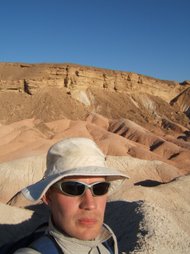Just out of interest, I looked up the journal 'Homeopathy' (see below) in ISI's Journal Citation Reports. It isn't listed, which cheered me up a bit. However, the Journal of Alternative and Complementary Medicine is listed, and has a impact factor of 1.104. In comparison, the Canadian Journal of Earth Sciences, a solid and respected regional earth science journal, has an impact factor of 0.943. So perhaps it would be a better career move to try to publish some pseudoscience that purports to prove the efficacy of homeopathic treatments, than to try to produce a solid and useful piece of earth science research.
I'm sure this is not the intention, but including such pseudo-journals in these rankings has the effect of making them seem respectable. After all, the numbers don't lie, right?
Subscribe to:
Post Comments (Atom)

1 comment:
I'm sorry, but you can't judge a journal by it's title alone. Your post sounds as though you have a bias against "alternative medicine" and biases aren't very scientific are they? Perhaps if you posted examples of "pseudoscience" found in the journal itself, citing specific examples of poor research, sample size, or analysis techniques, I might find your opinion more worthwhile.
Post a Comment